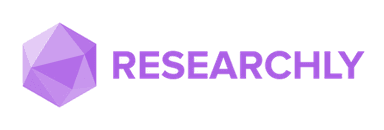The unbundling of Adobe: AI‑native ad tools threaten SMB demand
From Adobe's latest earnings call: $5B AI-influenced ARR, a shift from seat- to value-based pricing, SMB/GenAI pressures, and the coming unbundling of Adobe.

What Is “AI-Influenced ARR”
On the latest earnings call, Adobe leaned hard into AI. From the earnings call:
Adobe is the leader in the AI creative applications category. Our AI-influenced ARR has now surpassed $5 billion, up from over $3.5 billion exiting fiscal year 2024, and we’ve already surpassed our full-year AI-first ending ARR target.
First off, what is AI-influenced revenue? Whatever it means, it seems to be working:
- Revenue grew 10% year-over-year to $5.99 billion.
- Digital Media revenue increased by 11% to $4.46 billion.
For context: Adobe has three segments. Digital Media is by far the biggest revenue driver with 80% revenues. Digital Media includes apps like including Photoshop, Illustrator, Premiere Pro, and new generative AI tools like Firefly, Behance, Frame.io, and Adobe Express for end-to-end creative workflows (see the complete breakdown here)
From Seat-Based to Value-Based Pricing: A Major Shift
What I found interesting was their shift to from seat‑based pricing to value‑based pricing
We have seen a direct correlation between increased use of AI and retention… [and it] lets us go from seat‑based pricing to value‑based pricing… underpinned by commercially safe models.”
This reinforces the Creative Cloud Pro migration (i. e. their premium tier). When AI demonstrably saves time or automates tasks, Adobe can price on outcomes.
Counterpoints remain: The shift from seat-model to usage-based is a catch-22: if they deploy agents / AI they are selling increased efficiency. I. e. less time and people needed to solve a task. Thus, less seats necessary and eroding their local network effects.
Figma faces something similar as I have written in: Figma's Death: Innovator’s dilemma, AI moats & Vibe Coding
Challenges from SMBs and Built-in Gen-AI
Another caveat is that the increase in Pro offerings might be because lower end customers are churning:
I think you’re going to see some small and medium businesses use it [the creative tools].”
Adobe making it seamless, which is why you’ve seen in the Gen Studio for Performance Marketing the support for third-party channels, whether that’s TikTok, Meta, Google, Amazon, all of that. We’re just going to continue to do. That adoption, I think we talked about in the enterprise, just continues to be really exciting for us.
In other words: Native gen‑AI from Google/Meta/TikTok may be “good enough” for a lot of SMBs to create ads without Adobe. For instance, Amazon launched AI‑driven automation tools to speed asset creation and Meta has articulated ambitions to automate ad creation and targeting by 2026,
Unbundling Adobe
AI creates new product categories. Such as tool for “vibe coders” (see Figma's Death: Innovator’s dilemma, AI moats & Vibe Coding) or “vibe designers”, i. e. solopreneurs using Google Nano and Co. to create ads and videos. In other words, startups are unbundling Adobe, like FinTechs did with Banks. And Adobe is perfectly positioned for that unbundling. They describe themselves as the operating system:
Simply put, Adobe is the operating system for creative work… the magic is in our applications… we can take all of the models that exist and integrate that within our interface… our strategy… is choice and integrations.
Moreover, AI reshapes value chains. Expect SMBs to increasingly use built-in creative tools inside ad platforms.
